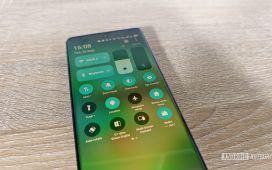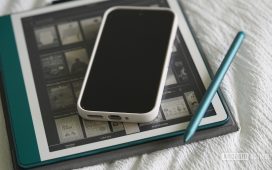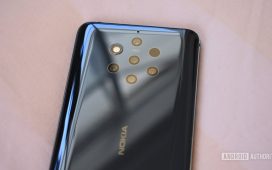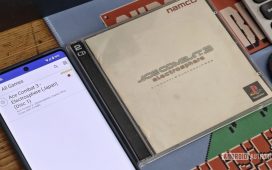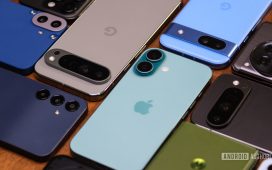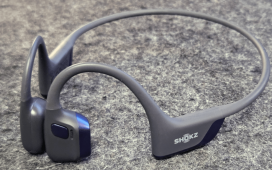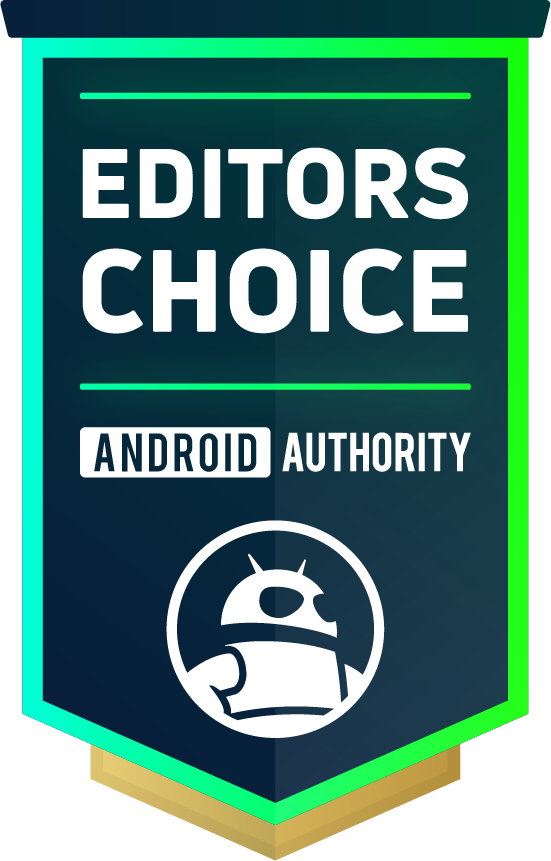
The Kobo Libra Colour is a versatile e-reader that combines a color display, standard reading features, and an open ecosystem, while also offering handy physical buttons for extra-tactile page turning. While the stylus and writing experience can use some refinement, the Libra Colour is a strong alternative to Amazon’s Kindle lineup.
I’ve been a long-time Kindle user, but when offered the chance to try the $219 Kobo Libra Colour, I was intrigued. Lured by the prospect of physical buttons, a color display, and a more open ecosystem, I wanted to see if this Kobo could compete with the Kindle experience I’ve been accustomed to for years. A concerning number of dragon-themed books later, I can confidently say that it’s a worthy alternative, especially if you’re after a tactile page-turning experience with a unique selling point the Kindle no longer has: physical buttons.
Turn the page, with buttons!
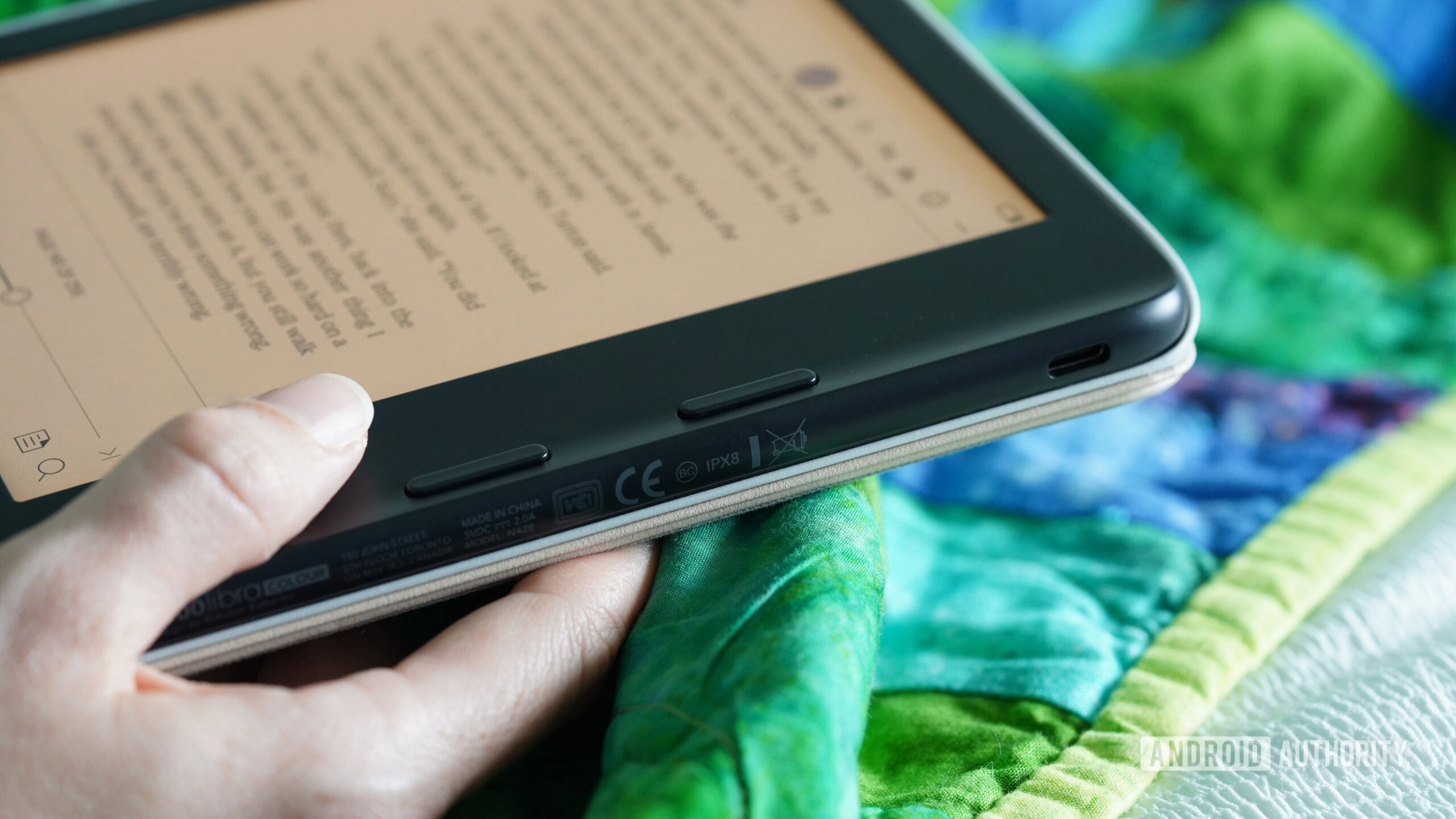
Kaitlyn Cimino / Android Authority
Like many E-Ink tablets, the Kobo Libra Colour (yes, that’s officially Colour, not Color in Kobo land) has a clean, minimalist design that’s lightweight (just under 200 grams) and comfortable for long reading sessions. Compared to the similarly sized Kindle Paperwhite, though, the Libra has a wide side bezel with a slight curve. For me, this makes it easier to grip single-handedly (even when lethargy loosens my hold half an hour into my book). And as I already alluded to, unlike the Paperwhite, the Libra Colour also features physical page-turn buttons.
Physical page-turning buttons, which can’t be found on Amazon’s current readers, make the Kobo Libra Colour an incredibly pleasant device to read on.
Fans of the Kindle Oasis will already know the benefits of this feature, but as someone who’s primarily used touchscreens for years, I was genuinely surprised by how much I enjoyed the tactile experience. Using the buttons is considerably more convenient and seamless than my standard habit of navigating through pages with one hand and holding my e-reader with the other. In bed, it allows me to keep more of my limbs comfortably under the blanket. On the couch, it leaves one hand free for my cup of emotional support tea.
Since Kindle officially shuttered the Oasis line (which was the brand’s only remaining model with buttons) the Kobo device stands out. The buttons are even customizable so you can determine what makes the most sense for you. I learned that, like playing with inverted controller settings on Xbox, my brain expects the exact opposite functionality as my partner.
The reading rainbow
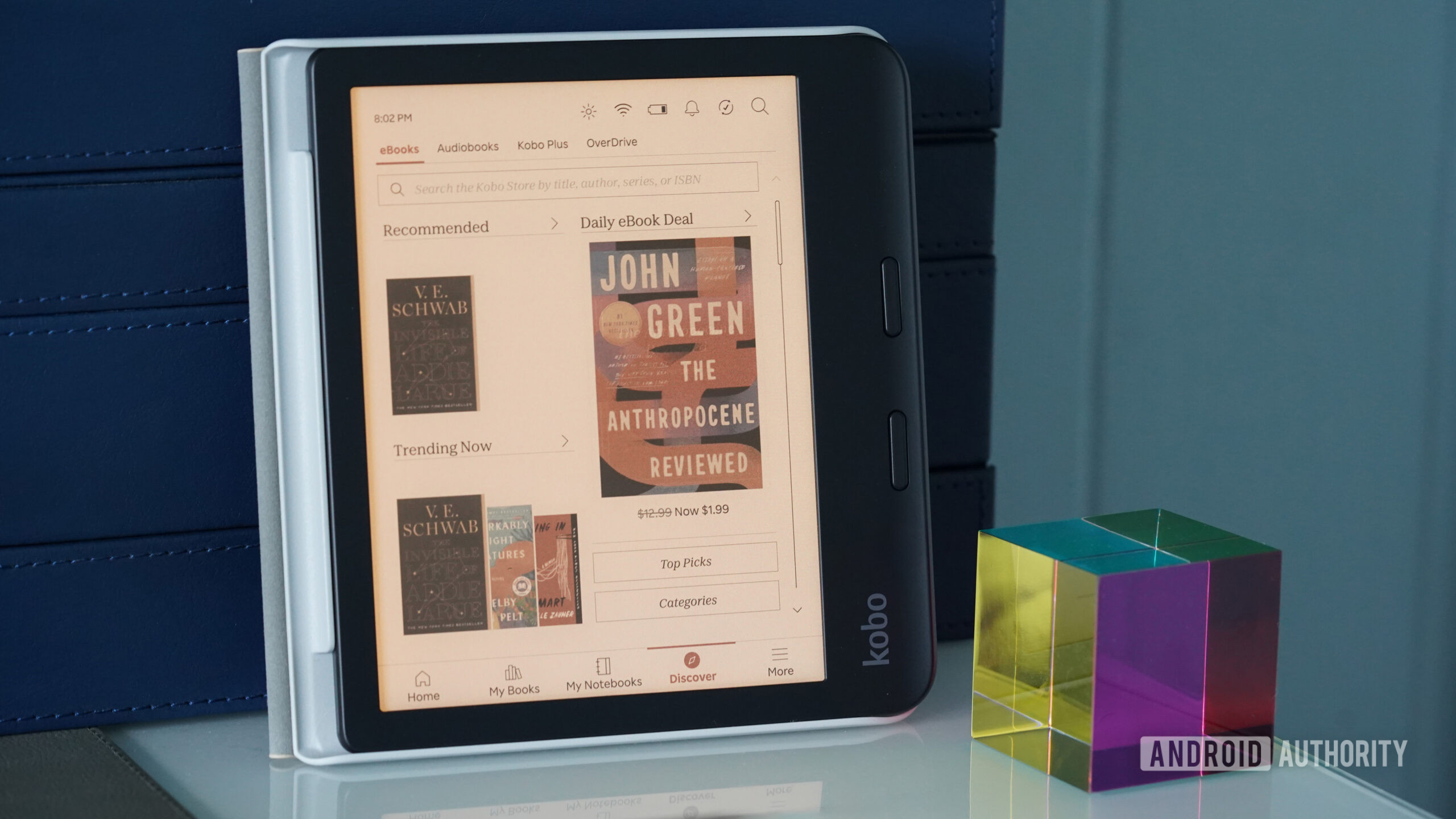
Kaitlyn Cimino / Android Authority
The Libra Colour’s headline feature is, of course, right in its name. Kobo uses a Kaleido 3 color E-Ink touchscreen display with a 1264 x 1680 resolution to add subdued but meaningful pops of color to all the device’s content, from book covers and menus to highlights and annotations. To be clear, it’s not vibrant like a tablet, the hues are muted to almost pastel saturation. Still, it makes perusing my library significantly more engaging.
Though subdued, color enhances the Kobo Libra Colour’s UI, from navigating menus to engaging with content.
On that front, the interface is intuitive, offering a user-friendly experience whether you’re new to e-readers or a longtime Kindle convert like me. The subtle color accents give the UI a fresh, modern feel without being distracting and transitions are generally smooth, though there can be a slight lag when handling especially content-dense pages. I did fumble a few taps here and there, but never enough to pull me out of a reading session.
My absolute favorite discovery was that I could adjust the display’s brightness on-demand, with a simple slide of my finger down the left edge of the screen. Now, I want to see the same tool added to the right side for text size. Overall, the UI feels thoughtfully designed.
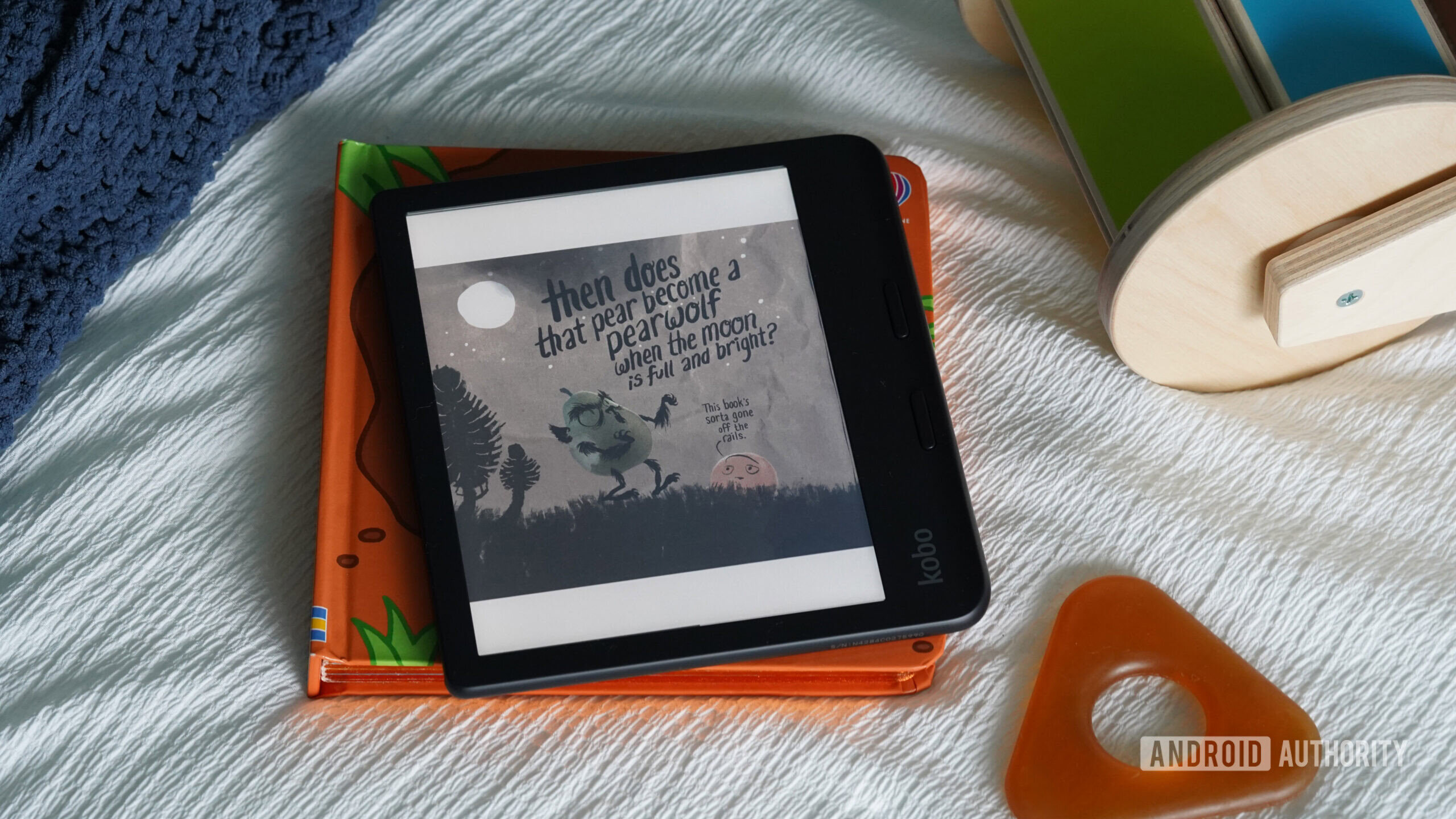
Kaitlyn Cimino / Android Authority
Compared to black-and-white-only tablets, it’s fantastic for comics and graphic novels, as well as for children’s books. With a ten-hour flight in my child’s near future, I love the prospect of loading the Libra with classics. There is, however, some significant flashing between pages that gives me pause. I imagine it’s low risk but could be a concern for kids with visual sensitivity. The color display is also helpful when reviewing notes in nonfiction titles; the ability to color-code highlights brought a sense of structure that’s hard to get from monochrome screens.
With that said, the Libra’s display seems to have slightly less contrast in pure text than other devices. For hard specs, the device offers 300 PPI when displaying black-and-white content (like regular text) and 150 PPI when displaying color. In practice, I haven’t had any issues reading on it, and again, the Libra’s color support makes it far more versatile. It also offers adjustable warmth (like most devices) and the brand’s ComfortLight PRO feature automatically reduces blue light exposure for evening reading.
The Libra Colour is especially great for graphic novels, comics, and kids books.
All in all, I thoroughly enjoyed reading on the device. The 7-inch display is amply sized while keeping the overall build small. It also packs in 32GB of storage, which I really appreciate for audiobooks in particular. Meanwhile, its IPX8 waterproofing meant I could also take it to the beach and poolside without stress, which I did begrudgingly, of course, for the sake of the review. The Libra Colour’s display looks great in virtually direct sunlight, though the colors did mute out slightly more.
Perfect and imperfect add-ons
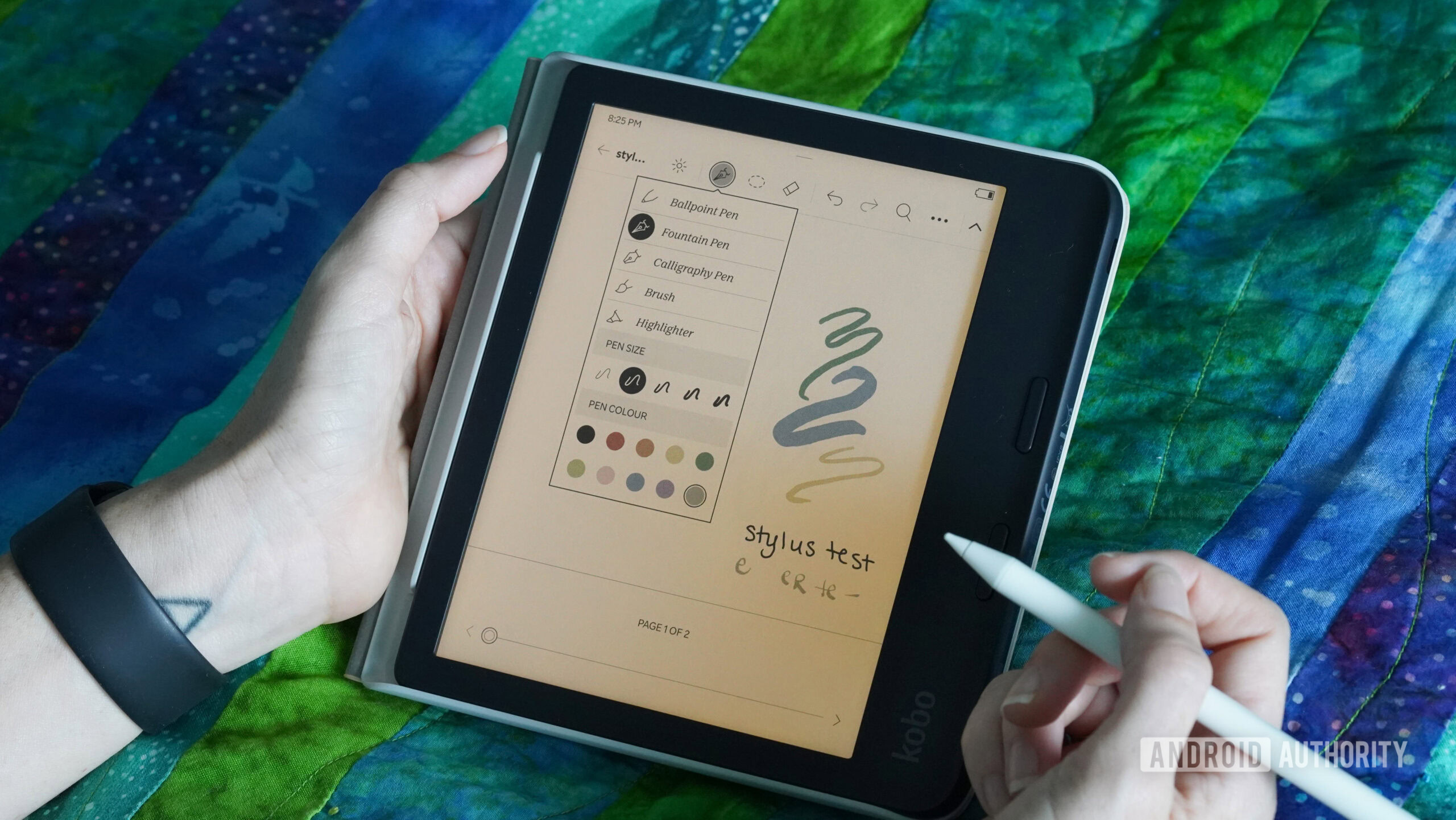
Kaitlyn Cimino / Android Authority
Color isn’t the only perk of the Libra, it also supports note-taking via the Kobo Stylus 2, which is sold separately for $69.99. Hot off testing the Kindle Scribe (2024), I was curious to see how well these tools compare. In the end, the stylus/writing compatibility of the Libra is a thoughtful addition, but far from perfect. Writing on the Libra’s E-Ink screen feels notably slower, and the stylus often misses strokes. There’s also a noticeable lag, and the eraser is hard to use with any precision. I like the variety of color and tool options, but the experience is too finicky to be used for much beyond quick jots.
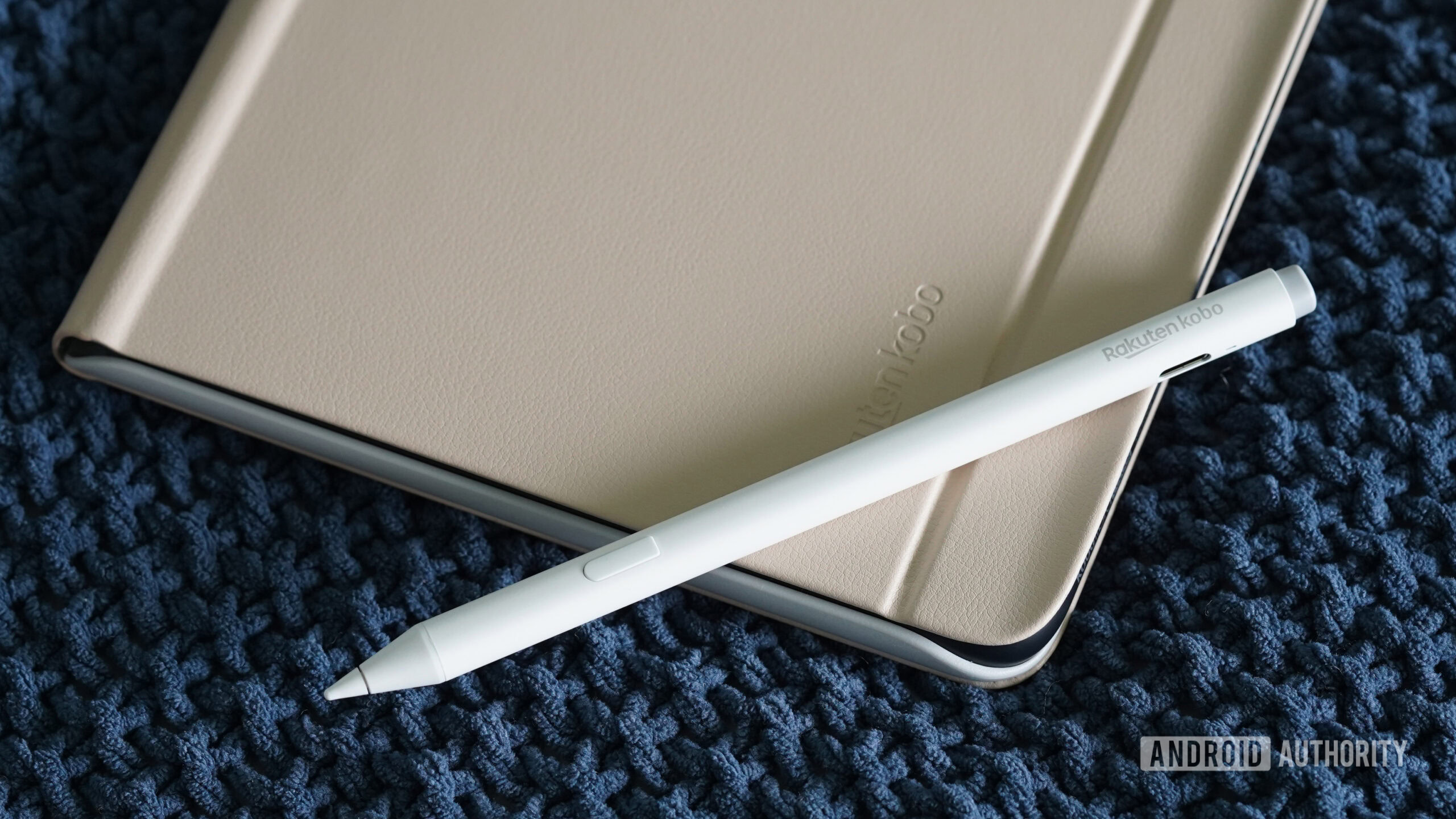
Kaitlyn Cimino / Android Authority
The stylus itself is slightly awkward to hold, and I constantly accidentally hit the tool swap button. It also needs to be recharged via USB-C, which isn’t as convenient as those that charge magnetically. It’s fine for highlighting passages or making small notes, but I definitely wouldn’t rely on it for longer writing sessions or detailed sketching. If handwriting is a priority, shoppers might be better off with a third-party stylus or even a more specialized device.
The Kobo Libra Stylus needs refinement across the board.
In other words, the Libra is no replacement for a reMarkable Paper Pro or an iPad, but if you’re just looking to mark up while you read, it gets the job done. It’s certainly satisfying to underline a sentence or leave a quick note in the margin and see soft color among grayscale pages.
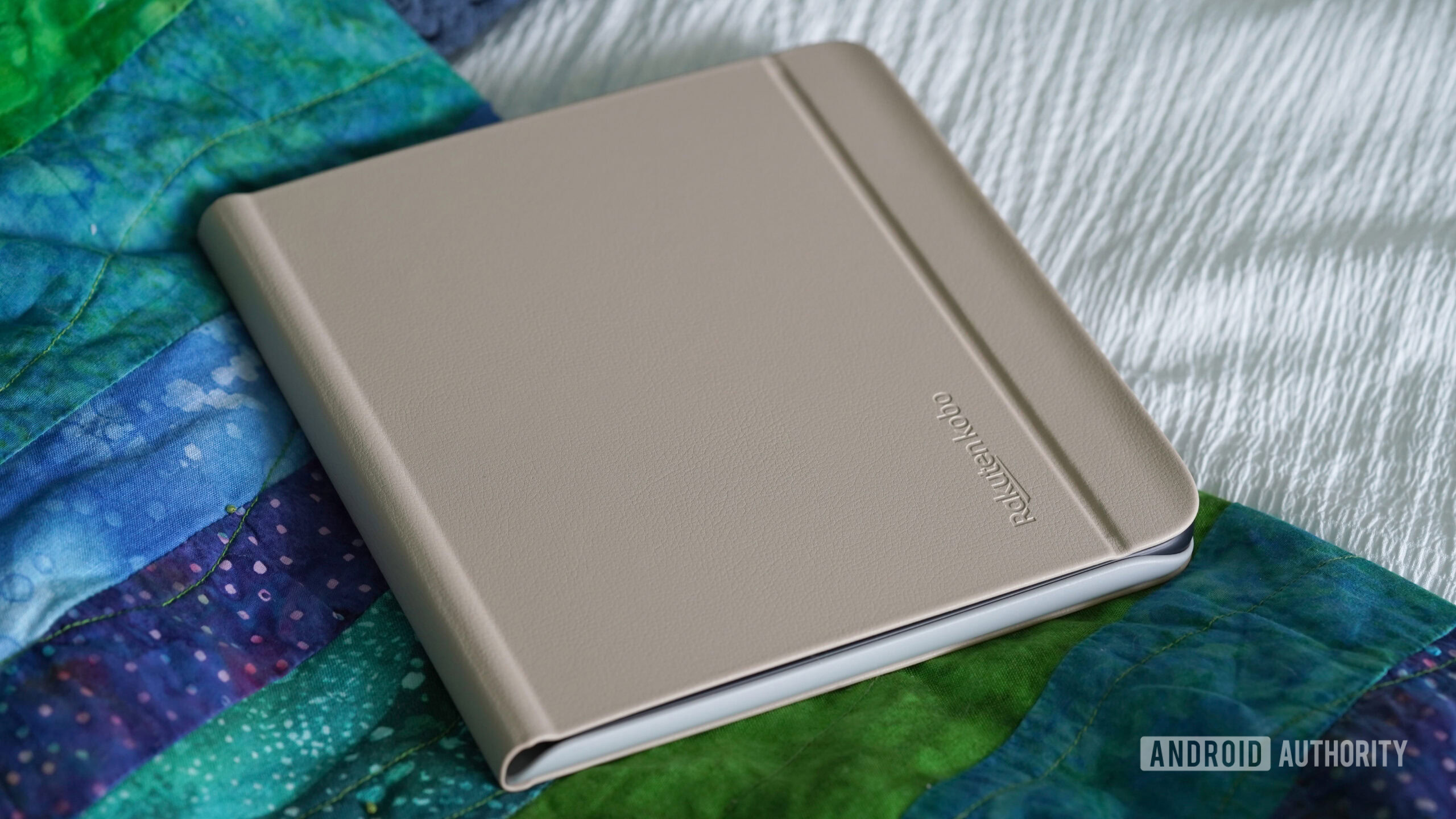
Kaitlyn Cimino / Android Authority
As for other accessories, I also tested the official Kobo SleepCover (available for $39.99), which, unlike many third-party covers, feels like it was actually designed with the device in mind. It snaps on magnetically, folds into a stand, and automatically wakes or sleeps the device when opened or closed. It’s not flashy, but when no more than three blinks short of passing out at night or groggily trying to squeeze in a few pages in the morning, not having to fumble with buttons or a lock screen is a mini luxury.
An open-door approach
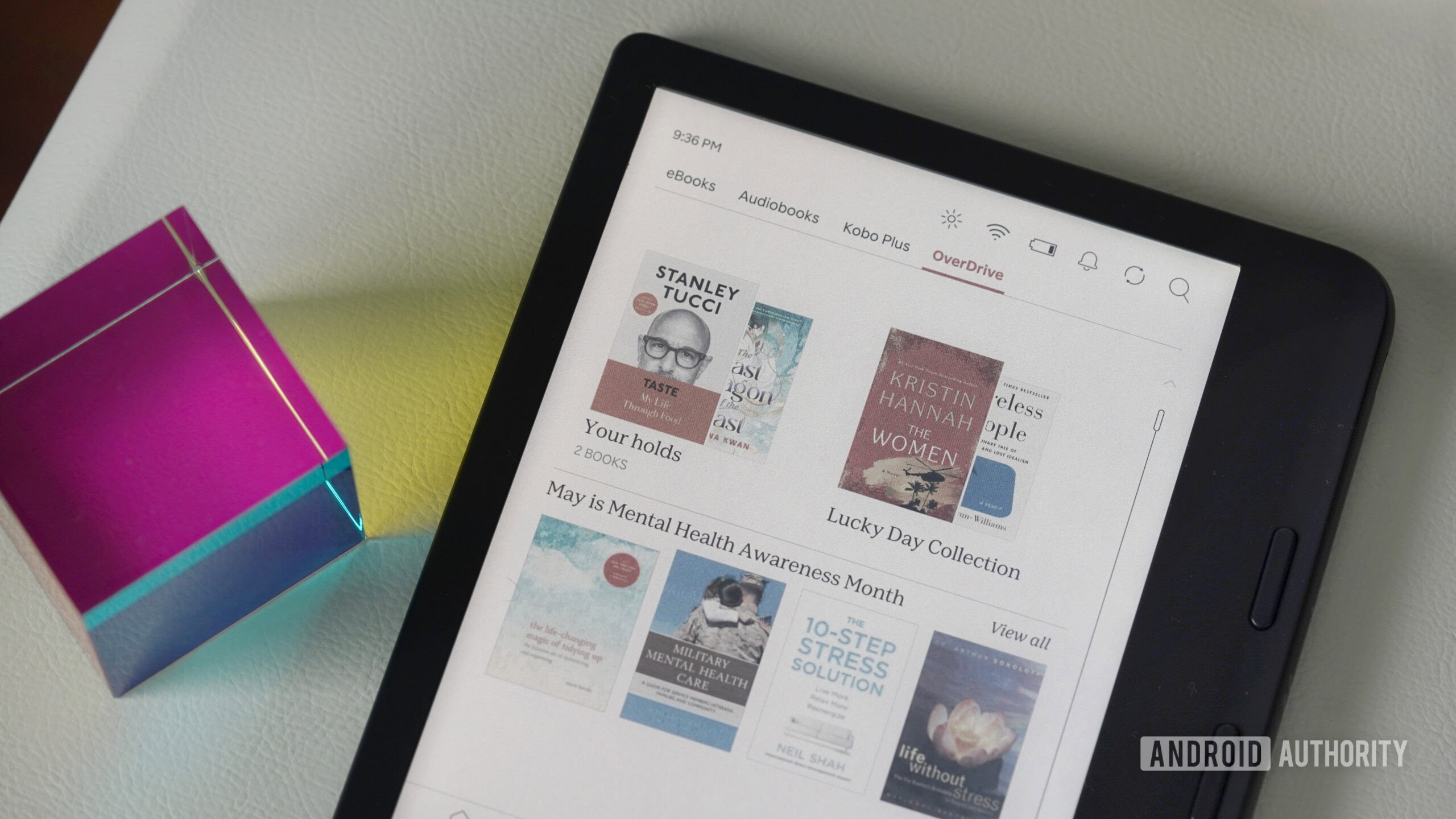
Kaitlyn Cimino / Android Authority
One of the biggest differences between the Kobo Libra Colour and Amazon’s Kindle is each brand’s ecosystem. The Libra doesn’t come locked into a proprietary store, though the Kobo store is built into the device. I was able to purchase from my Libra instantly but I could also easily load EPUB files and PDFs without any hassle. Kobo’s integration with Overdrive/Libby makes it easy to borrow eBooks directly from the library. Emphasis on direct. I love that I can instantly download free books without needing a second device.
Most importantly, the Kobo Libra Colour supports an open ecosystem and features seamless Libby integration.
For my audiobooks, the Kobo Libra Colour also features Bluetooth support, so I could pair up my own wireless headphones. Unfortunately, Kobo audiobooks are fine audio quality-wise, but the selection is limited compared to Audible, which is owned by Amazon. Likewise, the device isn’t integrated with Goodreads, another popular service owned by Google. If you use Goodreads to keep track of your read and rated books, you’ll have to do a little more heavy lifting.
As of now, the device also supports limited internet browsing, but the feature is still in beta. I am interested to see how this is developed going forward and how that might round out the tablet even further.
Kobo Libra Colour review: The verdict
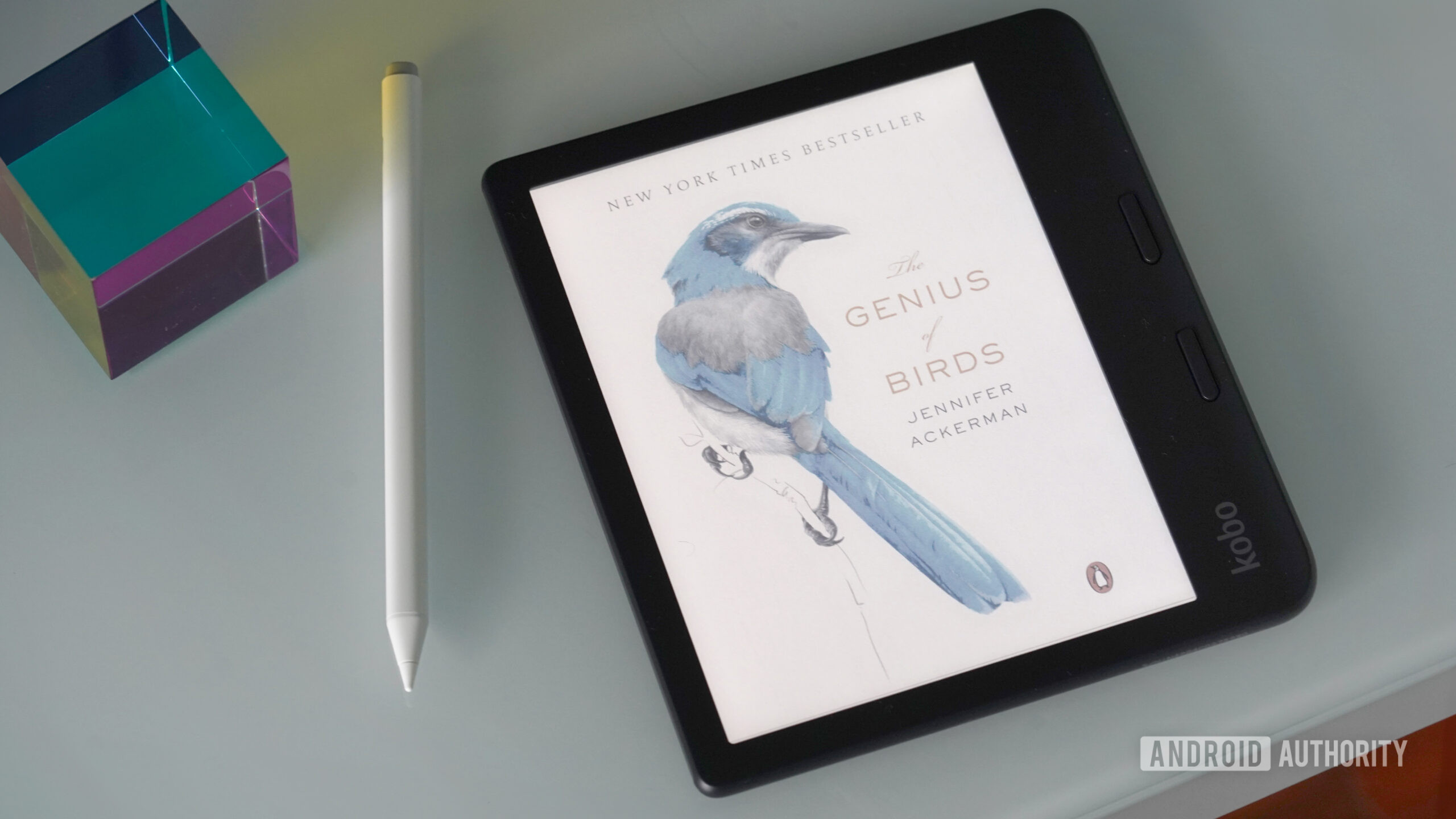
Kaitlyn Cimino / Android Authority
If you’re deep into the Amazon ecosystem, the Kobo Libra Colour might feel like a step away from the convenience of Kindle’s integration across apps and devices. However, if you’re looking for an alternative to Amazon that offers the novelty of physical buttons, combined with plenty of file support and a color screen, the Libra Colour has a lot to offer. It’s not without flaws (the optional stylus could be more responsive, and the audiobook store is limited), but overall, it’s worthy of serious consideration for casual readers and serious bibliophiles alike.
With that said, the e-reader market is a crowded one. If you just want a dedicated color e-reader, the Kobo Clara Colour ($149.99 at Amazon) is a great portable alternative that drops stylus support and buttons but still offers a nice 6-inch color screen.
Anyone committed to Kindle might want to check out the Kindle Colorsoft ($279.99 at Amazon) or the ever-popular 2024 Kindle Paperwhite ($159.99 at Amazon) instead, though you won’t find buttons or stylus support on board, and the latter doesn’t have a color screen. For more detailed note-taking, the 2024 Kindle Scribe ($419.99 at Amazon) pairs reading and writing nicely, but doesn’t support any color. It’s also quite bulky if reading is your primary goal.
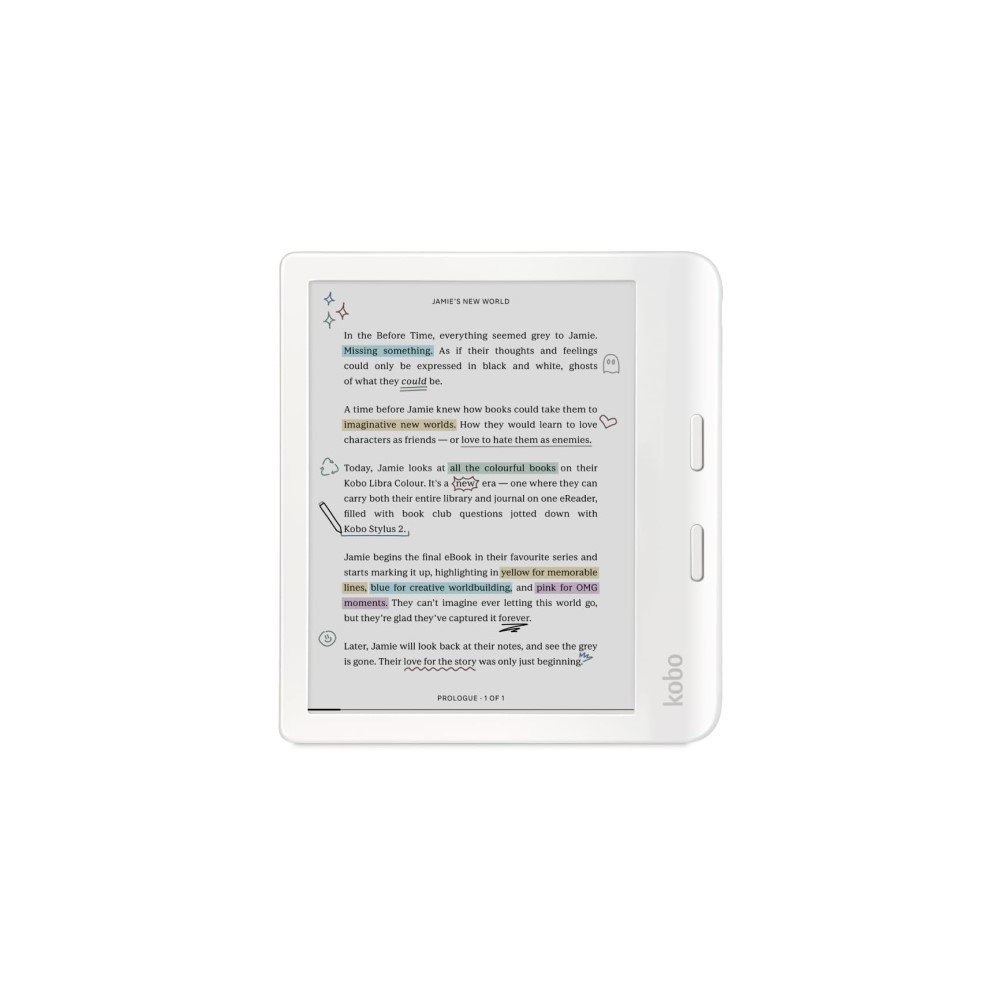

Kobo Libra Colour
MSRP: $219.99
Reading in color, page turning with buttons.
The Kobo Libra Colour is a versatile e-reader that combines a color display, standard reading features, and an open ecosystem, while also offering handy physical buttons for extra-tactile page turning.
Positives
- Physical buttons streamline navigation
- Portable, ergonomic build
- Color enhances the user interface and reading experience
- Open ecosystem offers versatility
- Waterproof
Cons
- Kobo Stylus 2 costs extra and needs refinement
- Online access still in beta

